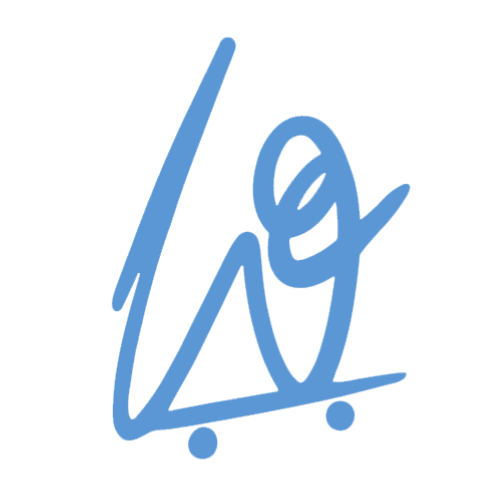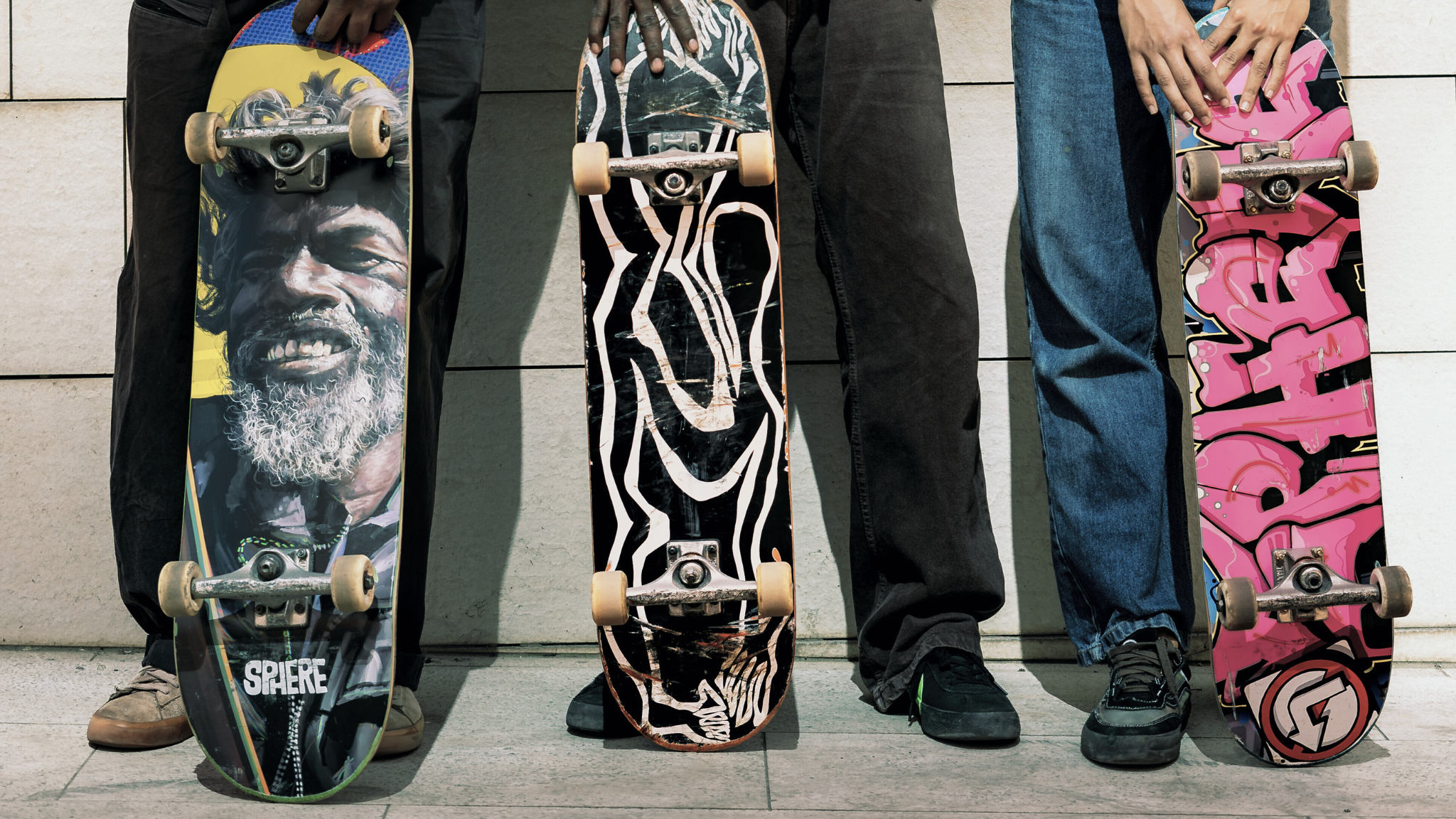
HOW TO CHOOSE THE RIGHT SKATEBOARD WHEELS

What's the right size skateboard wheel for you?
Choosing the right skateboard wheel size depends on your style of skating, deck size, and where you'll be skating (street, park, ramp, or cruising). Here's a quick guide to help you pick the right one:
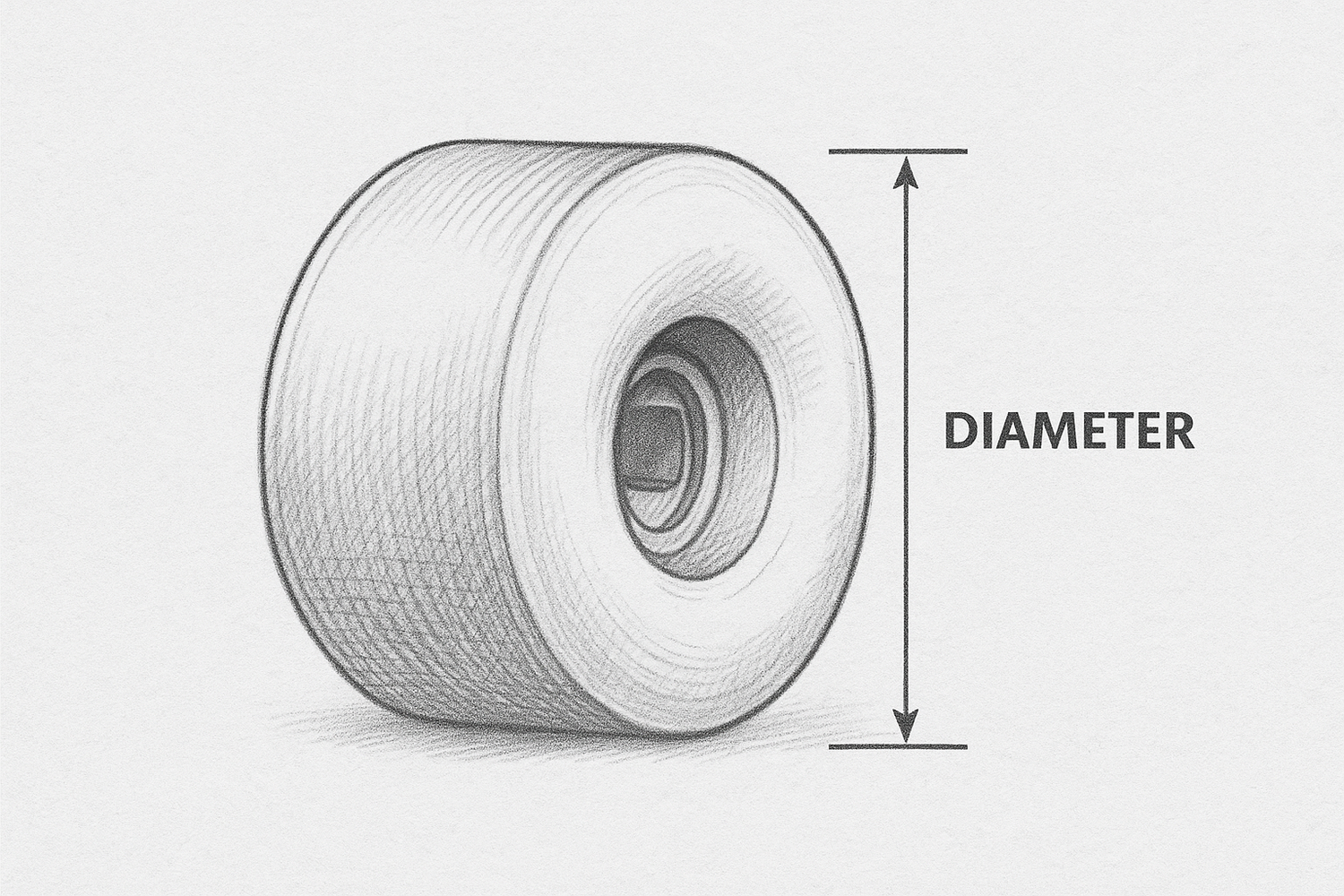
wheel size
Skateboard wheel diameter is measured in millimeters (mm), most wheels range from 50-75 mm, and the lower the number, the smaller the wheel.
Wheel diameter also affects how quickly you accelerate and how tightly you can turn. Smaller wheels result in a slower ride, whereas larger wheels result in a faster one. And because they’re lower to the ground and typically easier to control, smaller wheels are ideal for technical or street skating. If you’re a beginner or someone who uses a skateboard as daily transportation, you’ll want to look into larger wheels instead. Their increased diameters offer speed and balance all in one, making them perfect for low-key cruising or vert skating.
50-53mmSmall, slower wheels; stable for trick riding and smaller riders skating street, skate parks, and bowls.
54-59mmAverage wheel size for beginners and bigger riders skating street, skate parks, bowls, and vert ramps.
60mm +Specialty riders skating longboards, old-school boards, downhill, and dirt boards; made for speed and rougher surfaces.
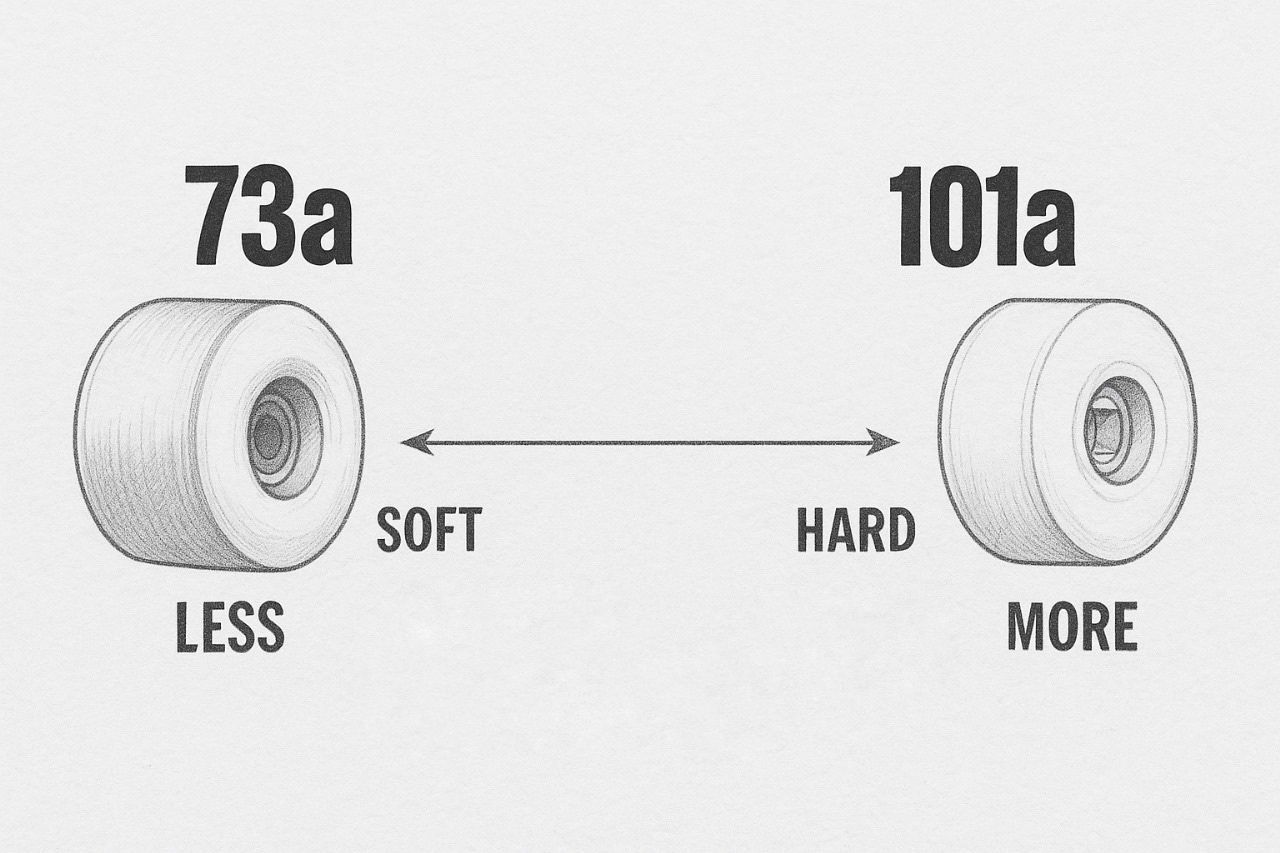
Skateboard Wheels Hardness
The hardness or durometer of a skateboard wheel determines how much grip the wheel has and the amount of shock it can absorb. To break it down, a softer wheel will compress when pressure is applied to it, giving it more grip and allowing it to absorb more shock. A harder wheel will barely compress under pressure, giving it less grip, and less shock absorption. A soft wheel will create a very smooth ride, but hard wheels are preferred by most street and transition skaters for their responsiveness.
Here are some general guidelines for wheel durometer as it concerns your skating preferences and skill level.
78a-87aSoft wheel good for rough surfaces, longboards, or street boards that need lots of grip to easily roll over cracks and pebbles. Designed for smooth rides, cruising, longboards, hills, and rough surfaces.
88a-95aSlightly harder and faster with a little less grip, but the grip's still good. Good for street and rough surfaces.
96a-99aNice speed and grip-- an all-around good wheel. Great for beginners skating street, skate parks, ramps, pools, and other smooth surfaces.
101a+Hardest and fastest wheel with the least grip. Ineffective on slick and rough surfaces. These are pro wheels.
83b-84bWheels using the B scale are extremely hard, measuring 20 points fewer than the A Scale in order to allow the scale to extend another 20 points for the hardest wheels.
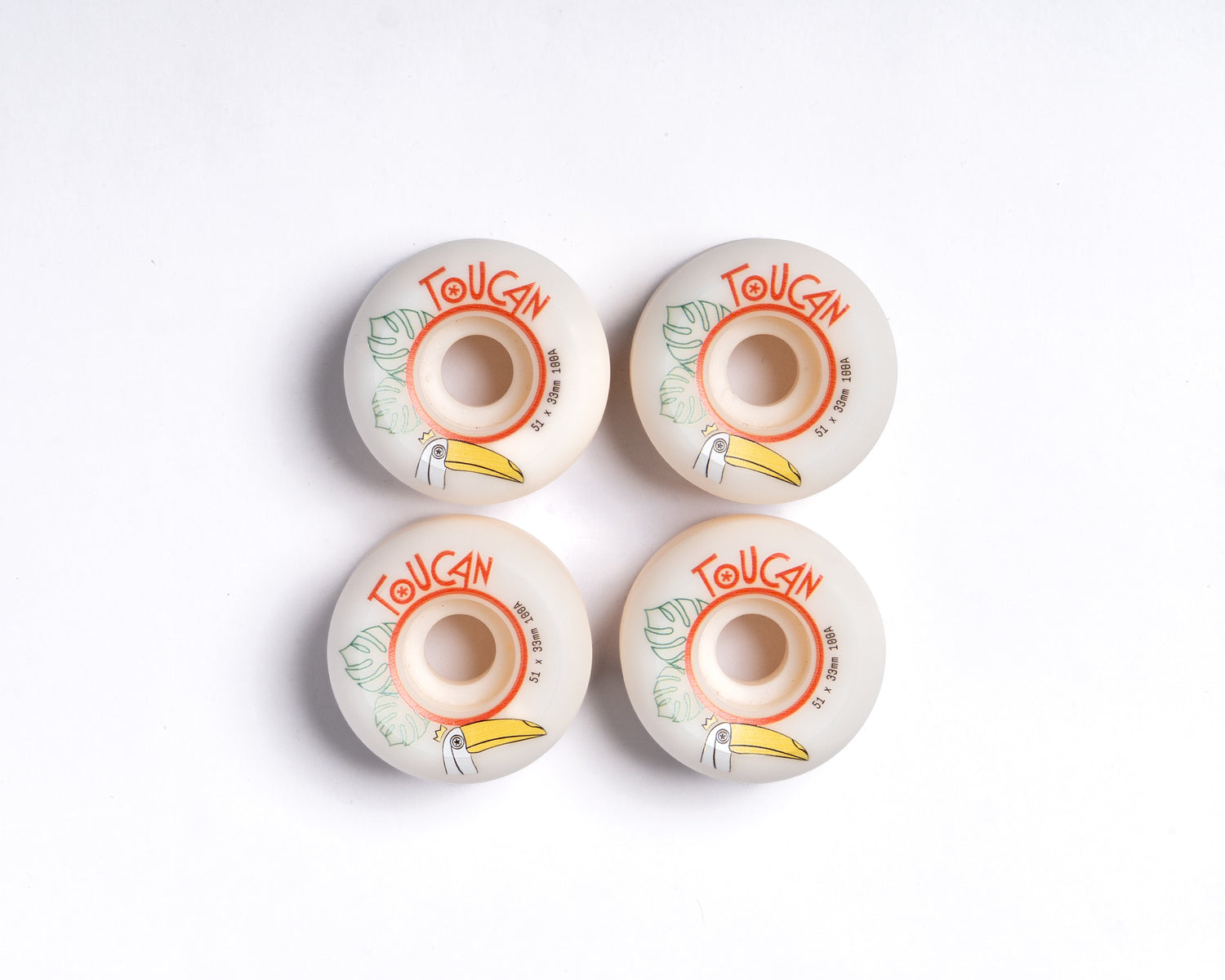
Choosing a Skateboard Wheel Shape & Contact Patch
Find the perfect wheels for your ride — whether you skate streets, bowls, or downhill.
Wheel Shape Explained
Round-Edged Wheels
- Street skating, flip tricks, skateparks
- Easy to slide, minimal friction, fast transitions
Square-Edged Wheels
- Cruising, vert, downhill
- Maximum grip, great for carving and speed control
Conical Wheels
- Street + transition skating
- Lightweight, responsive, easy lock-ins on ledges and rails
Radial/Full Contact
- Bowls, pools, mini ramps
- Balanced grip and slide performance
Sharp Lip Wheels
- Downhill, racing
- Extra grip and control in fast turns
What is a Contact Patch?
The contact patch is the part of your wheel that touches the ground and it changes everything.
Narrow Contact Patch
- Street skating
- Easier slides, faster response
- Less grip
Wide Contact Patch
- Cruising, downhill
- More stability and control
- Heavier, harder to slide
Pro Tip
Combine the right shape and contact patch to match your terrain and style. The wrong combo can make your board feel sluggish or too twitchy.
Note to Beginners: Try starting out with something in the 51mm - 55mm range. This is a very common size range and will be good for learning the basics.
